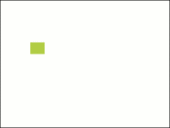Na (kana)
Appearance
(Redirected from ナ)
This article needs additional citations for verification. (January 2021) |
| na | |||
|---|---|---|---|
| |||
| transliteration | na | ||
| hiragana origin | 奈 | ||
| katakana origin | 奈 | ||
| Man'yōgana | 那 男 奈 南 寧 難 七 名 魚 菜 | ||
| spelling kana | 名古屋のナ (Nagoya no na) | ||
| unicode | U+306A, U+30CA | ||
| braille | |||
| kana gojūon | ||||||||||||||||||||||||||||||||||||||||||||||||||||||||||||
|---|---|---|---|---|---|---|---|---|---|---|---|---|---|---|---|---|---|---|---|---|---|---|---|---|---|---|---|---|---|---|---|---|---|---|---|---|---|---|---|---|---|---|---|---|---|---|---|---|---|---|---|---|---|---|---|---|---|---|---|---|
|
||||||||||||||||||||||||||||||||||||||||||||||||||||||||||||
| Kana modifiers and marks | ||||||||||||||||||||||||||||||||||||||||||||||||||||||||||||
| Multi-moraic kana | ||||||||||||||||||||||||||||||||||||||||||||||||||||||||||||
な, in hiragana, and ナ, in katakana, are Japanese kana, which each represent one mora. The hiragana な is made in four strokes, the katakana ナ two. Both represent [na]. な and ナ originate from the man'yōgana 奈. な is used as part of the okurigana for the plain negative forms of Japanese verbs, and several negative forms of adjectives.
| Form | Rōmaji | Hiragana | Katakana |
|---|---|---|---|
| Normal n- (な行 na-gyō) |
na | な | ナ |
| naa nā |
なあ, なぁ なー |
ナア, ナァ ナー |
Stroke order
[edit] |
 |


Other communicative representations
[edit]| Japanese radiotelephony alphabet | Wabun code |
| 名古屋のナ Nagoya no "Na" |

|

|

| |
| Japanese Navy Signal Flag | Japanese semaphore | Japanese manual syllabary (fingerspelling) | Braille dots-13 Japanese Braille |
- Full Braille representation
| な / ナ in Japanese Braille | |||
|---|---|---|---|
| な / ナ na |
なあ / ナー nā |
Other kana based on Braille な | |
| にゃ / ニャ nya |
にゃあ / ニャー nyā | ||
| Preview | な | ナ | ナ | ㋤ | ||||
|---|---|---|---|---|---|---|---|---|
| Unicode name | HIRAGANA LETTER NA | KATAKANA LETTER NA | HALFWIDTH KATAKANA LETTER NA | CIRCLED KATAKANA NA | ||||
| Encodings | decimal | hex | dec | hex | dec | hex | dec | hex |
| Unicode | 12394 | U+306A | 12490 | U+30CA | 65413 | U+FF85 | 13028 | U+32E4 |
| UTF-8 | 227 129 170 | E3 81 AA | 227 131 138 | E3 83 8A | 239 190 133 | EF BE 85 | 227 139 164 | E3 8B A4 |
| Numeric character reference | な |
な |
ナ |
ナ |
ナ |
ナ |
㋤ |
㋤ |
| Shift JIS[1] | 130 200 | 82 C8 | 131 105 | 83 69 | 197 | C5 | ||
| EUC-JP[2] | 164 202 | A4 CA | 165 202 | A5 CA | 142 197 | 8E C5 | ||
| GB 18030[3] | 164 202 | A4 CA | 165 202 | A5 CA | 132 49 153 51 | 84 31 99 33 | ||
| EUC-KR[4] / UHC[5] | 170 202 | AA CA | 171 202 | AB CA | ||||
| Big5 (non-ETEN kana)[6] | 198 206 | C6 CE | 199 98 | C7 62 | ||||
| Big5 (ETEN / HKSCS)[7] | 199 81 | C7 51 | 199 198 | C7 C6 | ||||
References
[edit]- ^ Unicode Consortium (2015-12-02) [1994-03-08]. "Shift-JIS to Unicode".
- ^ Unicode Consortium; IBM. "EUC-JP-2007". International Components for Unicode.
- ^ Standardization Administration of China (SAC) (2005-11-18). GB 18030-2005: Information Technology—Chinese coded character set.
- ^ Unicode Consortium; IBM. "IBM-970". International Components for Unicode.
- ^ Steele, Shawn (2000). "cp949 to Unicode table". Microsoft / Unicode Consortium.
- ^ Unicode Consortium (2015-12-02) [1994-02-11]. "BIG5 to Unicode table (complete)".
- ^ van Kesteren, Anne. "big5". Encoding Standard. WHATWG.


